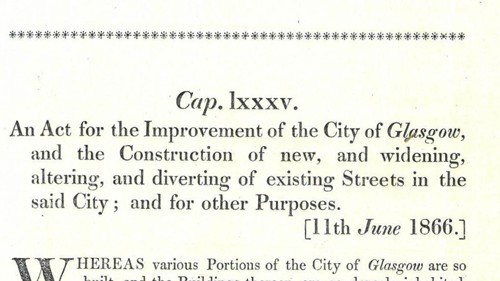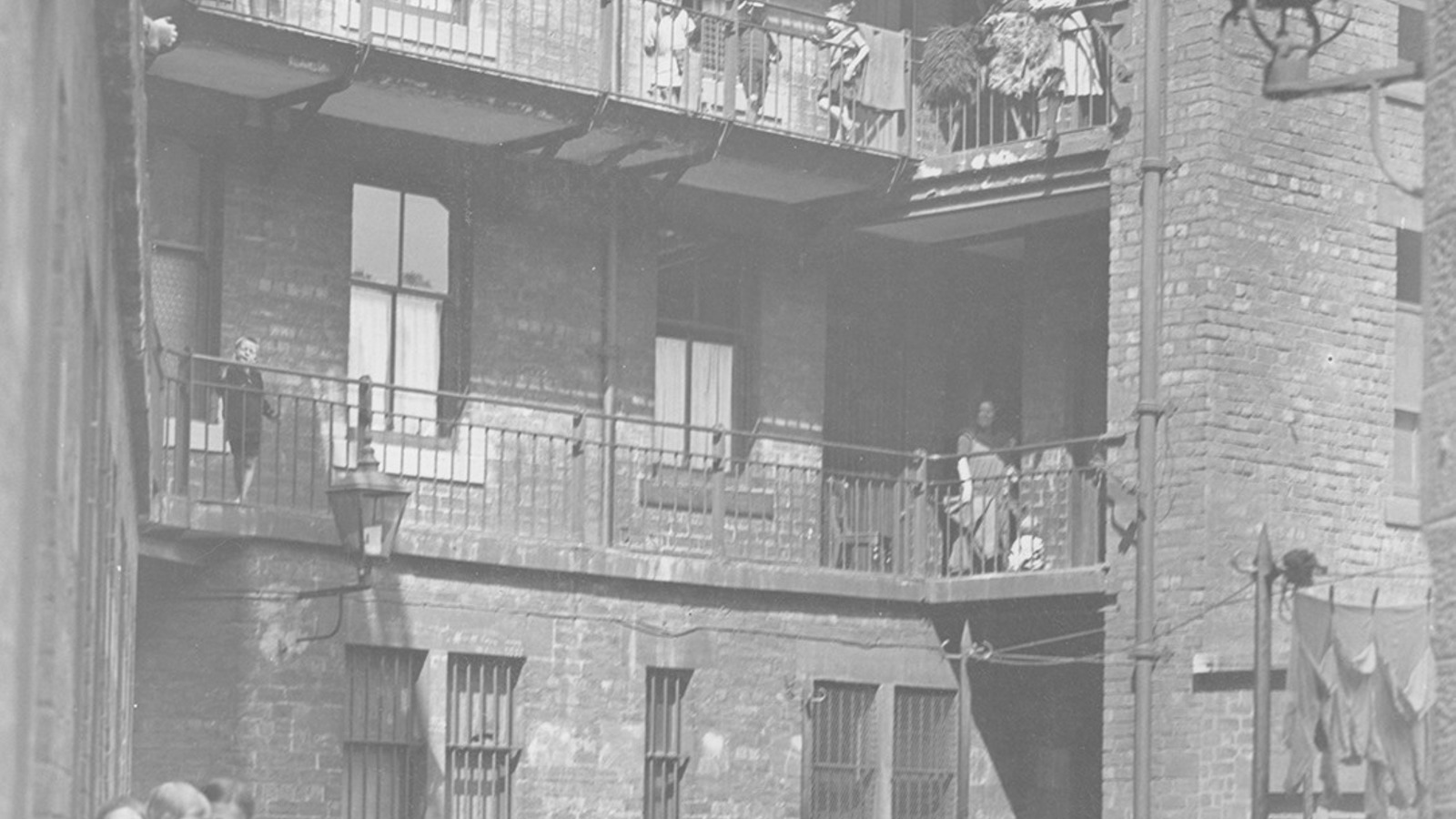Glasgow City Improvement Trust – Times Past

In partnership with the Glasgow Times, our archivists are exploring Glasgow's fascinating history. This week, Dr Irene O’Brien writes about the City Improvement Trust.
In 1866 Glasgow Council received approval for the Glasgow Improvement Act which gave it the power to set up a Trust to improve housing. This allowed for them to buy slum property and demolish, repair, sell land for redevelopment or to build replacement houses. At the forefront of one of the first public health reform movements, this legislation aimed to tear down the slums in the poorest neighbourhoods to allow for new urban development.
At the time Glasgow was experiencing its largest population boom. A large influx of migrants, mainly from Ireland and the Highlands, led to a quadrupling of the city’s population between 1800 - 1850. Demand for housing far exceeded supply. Many working-class citizens crammed into areas around the City Parish, such as High Street and Saltmarket. They experienced slum housing, filthy streets and closes. The City Improvement Trust gave photographer Thomas Annan the task of documenting the condemned buildings and narrow alleyways of the slums before they were dismantled.
Few local authorities in the UK thought that the lack of decent housing of poor people was one that they could tackle. Glasgow was one of the very few pioneering cities to take the powers. This allowed them to tackle the problem. While the City Improvement Trust bought and demolished tracts of congested slums on a scale greater than any other British or European city, it took longer than planned. This was because landlords were difficult and expensive to buy out. There was insufficient funds for housebuilding and the Trust sold cleared land to private builders on the condition that they would build high quality houses.

The Trust itself began to construct a limited number of new tenement streets containing houses with at least two rooms, running water and an inside toilet, as well as 'model' houses for single men and women. The first tenements in Saltmarket and Glasgow Cross were built as ‘models’ to show private builders what should be built. These were built to an extremely high standard and let to tenants who could afford the high rents.
By 1900 there was a recognition of the need to tackle the housing of the poorest people. Between 1900 and 1914 the houses built were simpler and cheaper. By 1914, 2199 houses were built by the Improvement Trust/Department. The effects of the Improvement Trust were beneficial but on such a small scale that they barely changed the housing situation.
